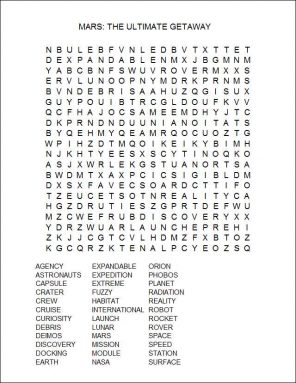The ultimate getaway — visiting the Red Planet
Adventure planners at NASA are investigating what it will take to get people to Mars
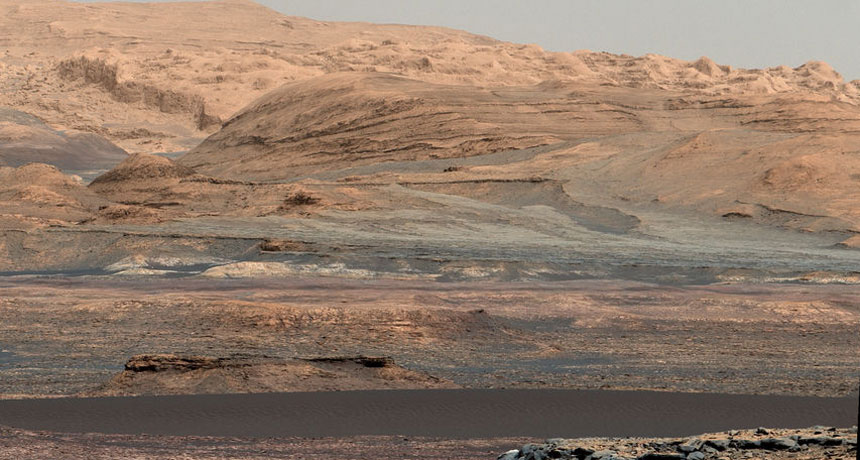
NASA is building a rocket and testing technologies needed to bring a crew here — to Mars. This dune field on the edge of Mount Sharp was photographed September 25, 2015, by the Curiosity rover.
NASA/JPL-Caltech/MSSS
WASHINGTON, D.C. — There is a long-standing joke that NASA is always 20 years from putting astronauts on Mars. Mission details shared at a recent gathering of experts now show that the space agency is still hewing to a 20-year timetable. A to-do list from 2015 looks remarkably similar to one put together a quarter-century earlier. One difference: NASA is now building a rocket and test-driving technologies needed to land a crew on Mars — or at least very near to it.
Details for this longest cruise in human history — and what astronauts will do once they arrive — remain fuzzy at best.
A big question, notes Jim Bell: What will astronauts do on Mars that robotic equipment controlled from Earth can’t already do? Bell is a planetary scientist who works at Arizona State University in Tempe. He participated in the Humans to Mars summit, here, last month. “We need to make sure that what these folks are being asked to do is worthy of the risk to their lives,” he explains.
The three-day meeting, which ended May 19, was organized by Explore Mars Inc. It’s a nonprofit group dedicated to putting astronauts on Mars by the 2030s.
The summit didn’t break new scientific ground. But it did bring together planetary scientists, space enthusiasts and people from both NASA and the aerospace industry.
A DIGGING IN Watch as the Curiosity rover drilled for the first time to explore what was inside a rock on Mars. NASA Jet Propulsion Laboratory |
Part of the appeal in sending people to Mars is the opportunity to speed the pace of discovery. NASA’s Curiosity rover has been exploring the Gale Crater on Mars since August 2012. Drilling just one hole currently takes the rover about a week. “It’s a laborious, frustrating, wonderful — frustrating — multiday process,” notes Bell.
People can react to new situations, make quick decisions and see things in a way that robotic eyes cannot. “A robot explorer is nowhere near as good as what a human geologist can do,” says Ramses Ramirez. “There’s just a lot more freedom,” explains the planetary scientist. He works at Cornell University in Ithaca, N.Y.
Researchers witnessed this human advantage firsthand in 1997. That’s when they sent a rover called Nomad on a 45-day trek across the Atacama Desert in Chile. While the rover traveled across the South American desert, its operators controlled it from desks in the United States. This very remote control was intended to model what it might be like to operate from Earth some robot on a distant planet.
THE LITTLE ROBOT THAT COULD See what robotic explorations the Curiosity rover accomplished during its first three years on Mars. NASA Jet Propulsion Laboratory |
People at the rover site provided a reality check on the data that Nomad sent home. And they observed that geologists at the scene could do things faster than the robots.
But it wasn’t just that, says Edwin Kite. He’s a planetary scientist at the University of Chicago in Illinois. “The robots were driving past evidence of life that humans were finding very obvious.” Clearly, their on-the-spot eyes and minds added value to the science underway.
Preparing for lift-off
To get astronauts ready to explore Mars, Apollo — NASA’s moon mission — is a good template, said Jim Head. He’s a geologist at Brown University in Providence, R.I. He also helped train the Apollo astronauts. NASA’s strategy, he said, focused on three T’s: “Train them. Trust them. And turn them loose.”
While each of the moon expeditions had a plan, the astronauts were trusted to use their judgment. Apollo 15 astronaut David Scott, for example, came across a chunk of deep lunar crust that researchers hoped to find. But it wasn’t at a planned stop. “He spotted it 3 meters away,” recalls Head. “He saw it shining and recognized it immediately.”
ORION’S JOB This 16-minute animation portrays how the Orion spacecraft would ferry astronauts into space, such as for a trip beyond the moon, including to Mars. It is narrated by Carol Meier. NASA/carolmeiervoiceover.com |
Despite a lack of clear goals for a jaunt to Mars, NASA is pushing ahead. Its Orion spacecraft has been designed to take astronauts into space. The crew capsule for this system has been to space once already. In 2014, a Delta IV rocket sent this capsule — minus any astronauts — 5,800 kilometers (3,600 miles) into space. (Later, it splashed down in the Pacific Ocean.)
Construction of the Space Launch System, a rocket intended to hurl humans at the moon and Mars, is now under way. The first test flight is scheduled for October 2018. It will send Orion on a multiday trip around the moon — again without any crew. NASA hopes to put astronauts on board for a trip in 2021 into lunar orbit.
Meanwhile, the crew aboard the International Space Station is collecting data and testing technologies. The goal is to figure out what it will take to keep humans healthy and happy during an interplanetary cruise.
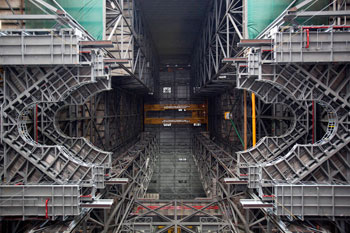
Astronaut Scott Kelly, for instance, recently completed a nearly year-long visit to the space station. His mission was intended to reveal effects on the body of long-distance space travel. And on April 10, a
prototype
inflatable habitat — called the
Bigelow Expandable Activity Module
— arrived at the space station. Six days later, the crew attached it to a docking port. The station crew
inflated the module for the first time
on May 28. No one will live in it. But over the next two years, astronauts will collect data on how well this unit handles radiation, temperature extremes and run-ins with space debris.
Beyond that, NASA’s plans get fuzzy.
The general idea is to build an outpost in orbit around the moon as a testing and staging ground. It could get underway in the late 2020s.
Upon arrival
The first crew to Mars might land on the planet. Or maybe not.
One idea is to set up camp in Mars orbit. From there, astronauts could operate robots on the surface without long communication delays. Another idea: Put people down on one of Mars’ two moons, Phobos or Deimos. When crews do land on the Martian surface, NASA plans to set up a base. Astronauts could plan expeditions from there.
With so few details, it’s difficult for the space agency to identify specific new technologies to develop.
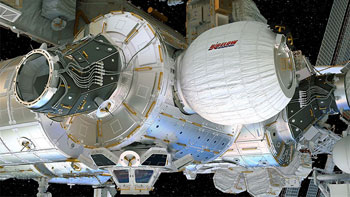
Any mission to Mars has to support astronauts for roughly 500 to 1,000 days. The mission has to deal with round-trip communication delays of up to 42 minutes. It will need the ability to land roughly 40 tons of material — including equipment plus any crew — onto the Martian surface (current robotic missions drop about a ton).
Living off the land also will be key. People on Mars will have to make use of local water and minerals. (Remember those potatoes that Matt Damon’s character started to grow in The Martian?)
And astronauts need the ability not just to survive, but also to drive around and explore. “We want to land in a safe place,” says Bret Drake. He’s an engineer at Aerospace Corp. in El Segundo, Calif. Such a spot would probably be “geologically boring,” he notes. But the goal would be to then move around and “go to exciting locations.”
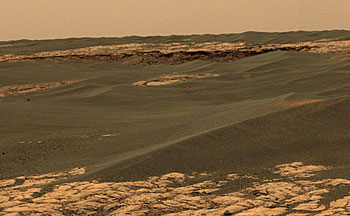
All of these technical and planning challenges might be the easiest part, Ramirez says. “We do know enough to pull this off,” he argues. “The biggest problem is political will.” By that he means that the public must be willing to pay for all the planning, research, materials and travel costs. So far, Congress has not yet signed off on funding this adventure. Indeed, the price tag remains unknown. But the cost is expected to be in the hundreds of
billions
of dollars. And any future President or legislators might decide to kill it.
Multiple speakers at the May meeting stressed the importance of using technology that already exists or is being developed. That means no exotic engines or rotating artificial-gravity habitats for now. And before committing to Mars, a series of small missions — baby steps to the moon and an asteroid — might make sense. They could show progress that might help keep activity (and public interest) alive.
“We thought going to the moon was impossible, but we got there,” says Ramirez. Now, even with Mars, “If we dedicate ourselves as a nation to do something crazy, we’ll do it,” he says. “I have no doubt.”
Word Find (click here to enlarge for printing)
